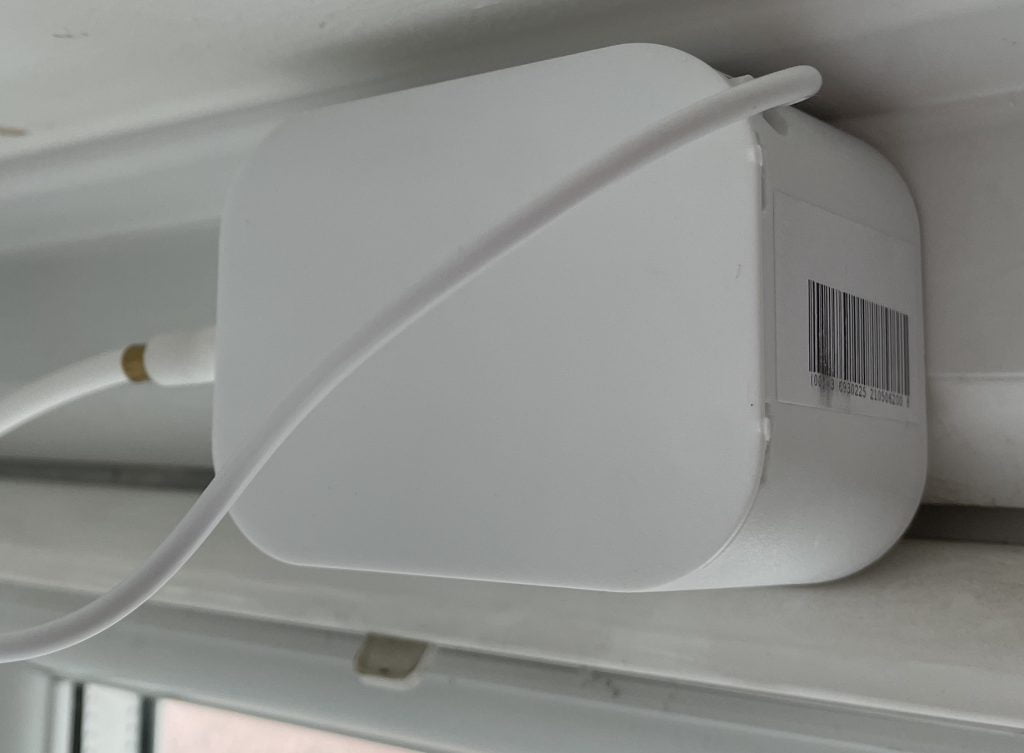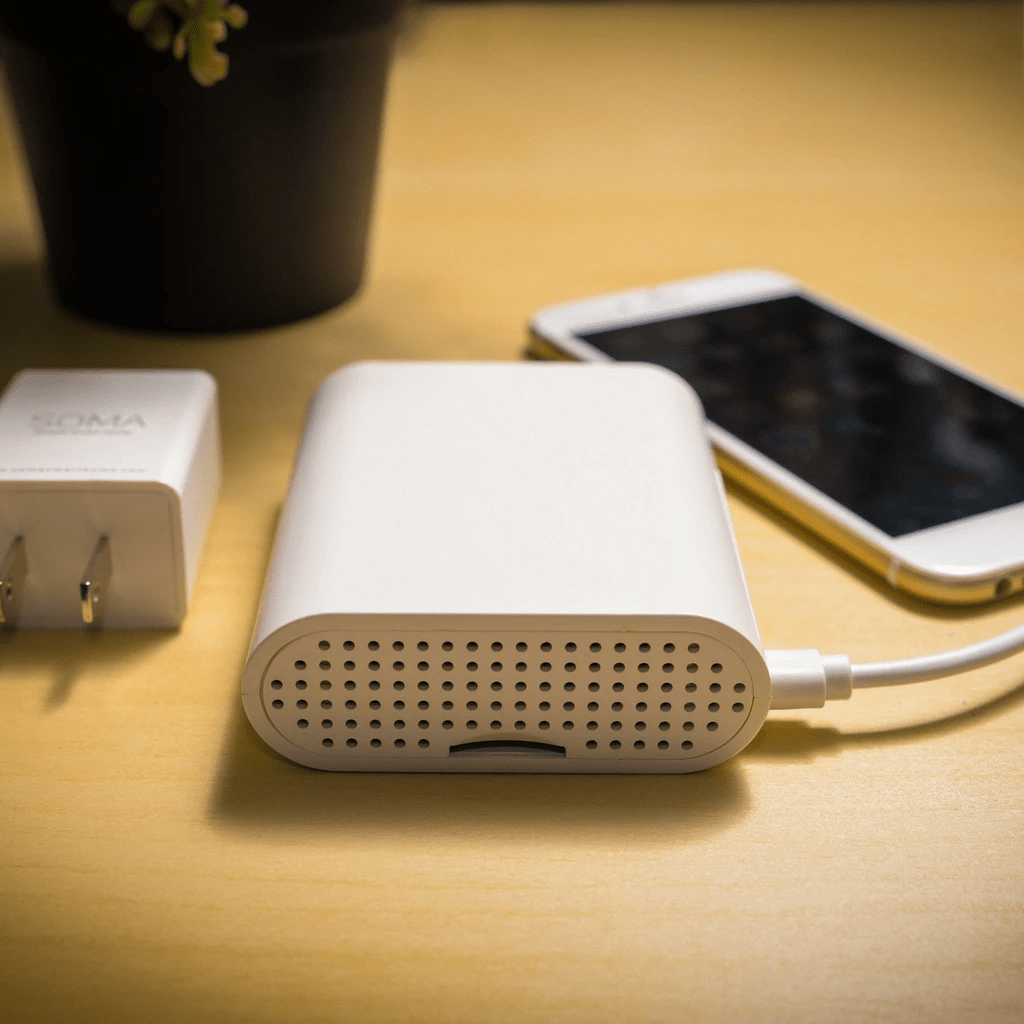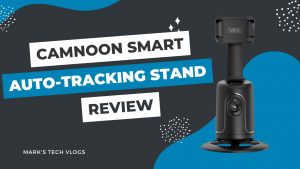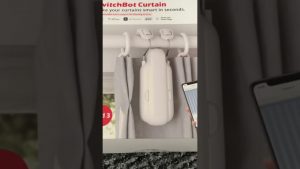Making those ‘dumb’ items around your house ‘smart’ is a more eco-friendly way of creating your smart home as you create less waste. The SOMA Tilt is a way of making your venetian blinds smart. In our SOMA Tilt review we dive into whether this device is any good or not.
What is the SOMA Tilt?
Manufactured by SOMA, a company with a focus on making dumb blinds smart, the SOMA Tilt and SOMA Smart Shades 2 are two products focused on making venetian blinds (with twist-to-open rods) and pull cord blinds smart. I’ve been using the SOMA Tilt for a couple of weeks with their SOMA Connect accessory (which provides voice control, HomeKit support and out of home options).
In a nutshell, the SOMA Tilt is a white block with a cord that attaches where your venetian blind rod would usually go. When it activates the cord is turned causing your blinds to open or close. This is achieved via your smartphone or via a variety of other services when you use the SOMA Connect (which is the essential accessory).
Priced at around £90-110 for the Tilt and £40-80 for the Connect (depending on if there’s a sale on) the Tilt and Connect aren’t cheap but are certainly cheaper than new blinds. The connect is also a Raspberry Pi under the hood and so you can create your own connect (they even have the software on the help section of their website).
The Design of the SOMA Tilt and SOMA Connect
The SOMA Tilt is a white block with rounded edges. It’s bigger than expected but understandable when you consider it needs room for a sizeable battery and a motor. The base of it has a jack input for charging and the top (or side the way I’ve mounted it below) has the wire for connecting it to your blinds. The SOMA Tilt comes with a selection of adapters to ensure that it will fit most rod fittings.
The SOMA Tilt also comes with a solar panel you can stick to your windows. This is great because it means you won’t have to worry about charging. In using it I’ve found that the solar panel is enough to keep the Tilt topped up but I’m yet to see if reach 100%…of course, this will depend on the direction your windows face and the time of year.

The SOMA Connect on the other hand is smaller but also has rounded edges. What SOMA don’t show you on their website picture is that the sides have a lot of ports (4 USB ports, a memory card slot, a HDMI port, a MicroUSB for connecting power and an ethernet port to be precise) and this is because the SOMA Connect is a RaspberrryPi with their own software on. This means you could save a bit by picking up your own and using the software from the SOMA website (here’s how) and as the software isn’t too intensive even the Raspberry Pi Zero which costs £30 including a case etc. should run this with no problems.

Setting up the SOMA Connect and SOMA Tilt
The set up of the SOMA Tilt has a few steps but is fairly easy. You start off by downloading the smart shades app and then plug in the Tilt to power and it’ll make a noise. The app then talks you through adding it, connecting it to your blinds and configuring the open up and open down settings. From then you can open and close your blinds in the app. If you have more than one Tilt you can also link them and it’s also from the app you can set schedules.
Setting up the SOMA Connect is slightly less intuitive but also done from the app. To set up the Connect you must be close to it and you add in your Wifi settings. From then on you can find your ID which you’ll need to link your SOMA devices to Alexa, IFTTT etc. You can also add it into Apple’s Home app by clicking the + in the home app and searching for an accessory without a code, this adds the Connect and your Tilts into your Home app.
If at a later date you need to reconfigure your SOMA Connect Wifi then you basically have to go through the setup process again as, weirdly, the Connect isn’t listed in the Smart Shades app. In using the Connect I’ve found that the Wifi signal is wildly unpredictable even when next to my Eero router but the ethernet connection makes it work with Alexa, IFTTT, Apple Home etc every time so I recommend an ethernet connection.
Using the SOMA Tilt
Once set up, you may need to adjust your blind setup (this is done in the Smart Shades app) but generally using the SOMA Tilt is easy. If you’re using the smart shades app you can open it and swipe on your blinds or blind-groups to open or close by anything from 0 to 100% (although bizarrely there’s no simply ‘open’ or ‘close’ options which can make the swipe gestures a little irritating) and out of the box that’s the functionality of the SOMA Tilt.
In my opinion, this is why the SOMA Connect is a must-have accessory because it enables you to set up routines based on other smart home devices or times of day using a variety of services including IFTTT, it gives you voice control with Google or Alexa and let’s you use it in the Apple Home app (my go-to way of using them). This means you can leave those irritating swipe gestures behind and only use the smart shades app when you want to check battery level. The SOMA Connect software is what turns the SOMA Tilt from a gadget into a genuinely useful smart home product.
SOMA Tilt Review – What’s the Verdict?
The SOMA Tilt is a great way of making existing venetian blinds smart with some nice features than include being able to group blinds together however certainly requires you to pick up a SOMA Connect or a Raspberry Pi to make the most of it and really have automation options (including our of home use). It works well and, whilst setup requires some adjustment I’ve been pretty impressed with it.
The SOMA Tilt however is let down by the Smart Shades app which feels like it’s been thrown together without much thought of user experience. There’s some nice visuals but nothing feels intuitive. This makes the Tilt a smart home product for people who are used to technology and not ideal as your first smart home product.
You can read our other smart home reviews here or pick up a SOMA Tilt here.
(if you prefer a video review check out my video review on YouTube)







I’d like to automate a room which has 5 mini blinds. Three of the windows have a width of 69″ (32×69). Is the Soma tilt 2 powerful enough to tilt blinds with that width?
Is there a price break for ordering five Soma tilts 2?
I’d also like to add voice control through google assistant, What would be the cost for me to do the room with 5 windows w/voice control?
Would I be able to indicate through voice control the percentage the blinds can open and close?
Hey Lamar, At the moment there isn’t a price break so you’d have to buy 5 Soma tilts. They did a bundle deal around Black Friday so if you’re not in a hurry it could be worth waiting.
As the tilt just turns the tilt control the size of the blinds doesn’t matter, you just need enough space around them to mount the tilt itself.
To add voice control you’ll also need to buy the SOMA Connect and have that in the same room. You can set them to %’s with voice control.
Hope that helps!